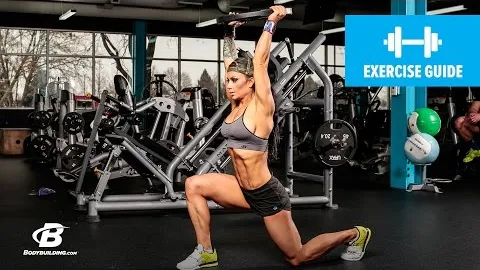
If you're looking to take your strength and stability training to the next level, then the walking lunge with weight overhead exercise is worth incorporating into your routine. This dynamic movement engages multiple muscle groups while challenging your balance and coordination. Not only is it an effective exercise for building strength and power, but it also helps to improve your flexibility and mobility. In this article, we will provide a step-by-step guide to performing the walking lunge with weight overhead, along with tips on proper form and variations to keep your workouts fresh and challenging.
The walking lunge with weight overhead offers numerous benefits for individuals of all fitness levels. Some of the key advantages of including this exercise in your workout routine include:
This exercise targets several major muscle groups simultaneously, including the quadriceps, hamstrings, glutes, calves, and core muscles. By holding a weight overhead, you also engage your shoulder muscles, upper back, and triceps, making it a powerful exercise for overall strength development.
The walking lunge with weight overhead requires you to stabilize your body while moving in a forward lunge position. This helps to enhance your balance and coordination, translating to better performance in both athletic activities and daily movements.
By incorporating walking lunges into your workout routine, you can improve your leg power and explosiveness. As you push off from each lunge, you activate the fast-twitch muscle fibers in your legs, contributing to increased power output.
The walking lunge with weight overhead engages your core muscles, including your abdominals and obliques, to maintain an upright posture while performing the movement. This not only strengthens your core but also promotes better spinal alignment and stability.
Walking lunges mimic the natural movements we perform in daily life, such as walking and climbing stairs. By training these functional movement patterns, you improve your ability to perform everyday tasks with ease and efficiency.
Before attempting the walking lunge with weight overhead, it's important to choose an appropriate weight according to your fitness level and strength capabilities. Start with a lighter weight and gradually increase as you become more comfortable with the exercise. Here's a step-by-step guide to correctly execute this movement:
To maximize the effectiveness of the walking lunge with weight overhead exercise and minimize the risk of injury, keep the following tips in mind:
To add variety and further challenge your body, consider incorporating these variations of the walking lunge with weight overhead into your routine:
Perform a reverse lunge by stepping backward instead of forward. This variation places more emphasis on your hamstrings and glutes while still engaging your core and upper body.
Instead of stepping forward, cross one leg diagonally behind the supporting leg, as if performing a curtsy. This exercise targets your glutes and inner thighs, providing a unique challenge to your lower body muscles.
Add a rotational element to your walking lunges by incorporating a twist as you lunge forward. This variation engages your obliques and further challenges your core stability.
The walking lunge with weight overhead is a versatile and highly effective exercise that can help improve your overall strength, stability, and mobility. By engaging multiple muscle groups simultaneously and incorporating functional movements, this exercise provides a full-body workout that is both challenging and rewarding. Remember to start with a suitable weight and focus on maintaining proper form throughout the movement. With regular practice and progression, you'll be on your way to achieving greater strength and athleticism.
If you're looking for a gym, fitness club or yoga studio, you've come to the right place.
You can find information about gyms in your area. Browse catalog of gyms and find gyms with classes which are you looking for.
On gym page you can find simple information like address, phone or website. You can find list of available classes. You can check availability of personal training or small group classes. On place page you can also see information about open hours.
You can find gyms near you with amenities, courts, studios and equipments.
Use our map to find gym at your city or district.
In Gym Navigator you can find list of exercises with movies for many body parts.
You can browse exercises catalog and find exercises the best of you.
You can also find exercises grouped into workout plans, which you can use to improve you body. Each routine show you exercises one by one and give you possibility to count you progress and count down rest time.